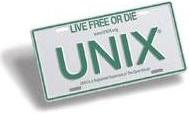The XBD document is part of the Base Specifications, Issue 6. XBD provides common definitions for the Base Specifications of the
Single UNIX Specification; therefore readers should be familiar with it before using the other parts of the Single UNIX
Specification. The presence of this document reduces duplication in the other related parts of the Single UNIX Specification and
ensures consistent use of terminology.
-
Chapter 1 is an introduction which includes the scope of the Base Specifications, and the scope of the changes made in this
revision. Normative references, terminology, and portability codes used throughout the Base Specifications are included in this
chapter.
-
Chapter 2 defines the conformance requirements, both for implementation and application conformance. For implementation
conformance, this includes documentation requirements, conformance definitions for the core POSIX subset, conformance definitions
for systems conforming to the Single UNIX Specification (denoted as the XSI extension), and option groups (previously known as
feature groups).
-
Chapter 3 contains the general terms and definitions that apply throughout the Base Specifications.
-
Chapter 4 describes general concepts that apply throughout the Base Specifications.
-
Chapter 5 describes the notation used to specify file input and output formats in XBD and XCU.
-
Chapter 6 describes the portable character set and the process of character set definition.
-
Chapter 7 describes the syntax for defining internationalization locales as well as the POSIX locale provided on all
systems.
-
Chapter 8 describes the use of environment variables for internationalization and other purposes.
-
Chapter 9 describes the syntax of pattern matching using regular expressions employed by many utilities and matched by the
regcomp() and regexec() functions. Both
Basic Regular Expressions (BREs) and Extended Regular Expressions (EREs) are described in this chapter.
-
Chapter 10 describes files and devices found on all systems and their semantics. For example, the device /dev/null is an
infinite data source and data sink.
-
Chapter 11 describes the asynchronous terminal interface for many of the functions in XSH and the
stty utility in XCU.
-
Chapter 12 describes the policies for command line argument construction and parsing. It contains the utility argument syntax
used throughout XCU, and also utility syntax guidelines for naming of utilities and the specification of their arguments and
option-arguments and operands.
-
Chapter 13 defines the contents of headers which declare constants, macros, and data structures that are needed by programs
using the services provided by the system interfaces defined in XSH. These are in the form of reference pages and are organized
alphabetically.
